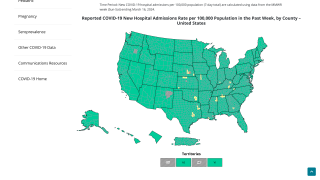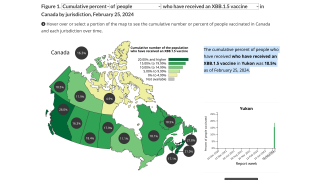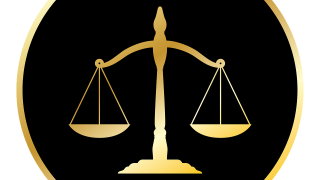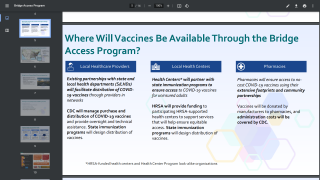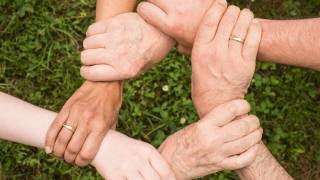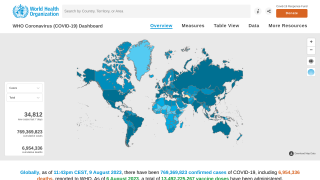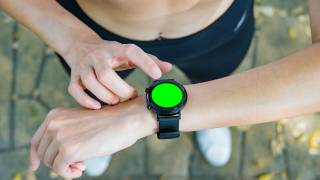Skiers Can Avoid Coronavirus This Winter

While the COVID-19 pandemic has thrown considerable uncertainty into the 2020-2021 ski season, one thing remains certain. Snow-covered mountains will beckon outdoor enthusiasts to click into skis or strap on a snowboard.
Laura Sehnert is an avid skier and plans to ski this winter with her family.
“I grew up skiing in Colorado and love that we have the opportunity to do so with our children,” said Laura Sehnert, chief medical officer and an emergency medicine physician at UCHealth Yampa Valley Medical Center,
“Skiing is an outdoor activity; many people already wear a mask, there’s space between people, and there’s no prolonged contact with others on the slopes. All of these are good things and fall in line with current public health precautions,” stated Lauren Bryan, a registered nurse and infection preventionist at Yampa Valley Medical Center, located in Steamboat Springs, Colorado, in a UCHealth news article published on November 3, 2020.
“By taking the proper precautions before traveling and while on the mountain, you can enjoy the sport, reconnect with the great outdoors, and keep yourself and those around you safe and healthy, too,” added Bryan.
And while on the mountain, wear your facemask over your nose and mouth.
“A facemask should be multiple layers of fabric,” added Bryan. “High-density fabric weave is also one that breathes well to lessen condensation on goggles, and keeps you warm, too.”
While the US Centers for Disease Control and Prevention (CDC) has not published specific data related to a person’s health risks from the SARS-CoV-2 virus when skiing, the CDC says the coronavirus causes COVID-19 mainly spreads from person-to-person through respiratory droplets.
But the virus is spread when people are within 6 feet for a total of 15 minutes with a person infected with SARS-CoV-2 coughs, sneezes, or talks, says the CDC.
For the 2020-2021 ski season, the National Ski Area Association (NSAA) published insights for skiers to follow this season to mitigate their health risks.
There are thousands of outdoor recreation options but what makes the ski industry different is its uphill transport: aerial ropeways like chairlifts, trams, and gondolas, and surface conveyors. Of these, chairlifts are the most common, says the NSAA.
Physical distancing in lift queues occurs organically due to the length of skis and snowboards. Ski area employees have vast experience managing queues and the expertise to ensure a consistent flow of appropriately-spaced traffic.
And ski guests will be asked to self-group and load the chair with their traveling party. Lift attendants will not require guests to ride a chairlift with people they do not know. High capacity chairlifts and closed cabin carriers may be the exception and may be loaded in a way that allows for physical distancing.
Since the average chairlift ride takes just 7 minutes, travels at approximately 5 mph, providing constant directional airflow, and is spaced approximately 50 feet apart, catching an airborne virus would be challenging.
Furthermore, express lifts maybe even safer, as they often travel at nearly 17 mph, with chairs spaced over 100 feet apart.
‘I am confident that the ski industry will continue to lead by example during these incredibly dynamic times. Everything has changed – except for our industry’s guiding principle: We always have, and always will place the health and safety of our staff, guests, and communities first,’ commented Kelly Pawlak, President and CEO National Ski Areas Association.
Moreover, don’t be surprised to see ‘masked’ ski patrols on the mountain this year.
Following CDC guidelines, National Ski Patrol says, ‘patrollers, while on duty, should wear an appropriate, comfortable, and well-fitting mask covering the mouth and nose at all times when interacting with the public or treating a patient.’
And in Utah, which has already received its first big snow, ski resorts are now opening. Utah's mountain resorts have created streamlined operations, consistent safety guidelines, and unparalleled pass options and assurances to help you plan and navigate skiing in Utah during the coronavirus pandemic, stated Ski Utah on November 23, 2020.
If you plan to go skiing or riding this winter in Utah, read your ski resort's guidelines and restrictions ahead of time at this webpage.
Vax-Before-Travel publishes research-based travel news.
Our Trust Standards: Medical Advisory Committee












